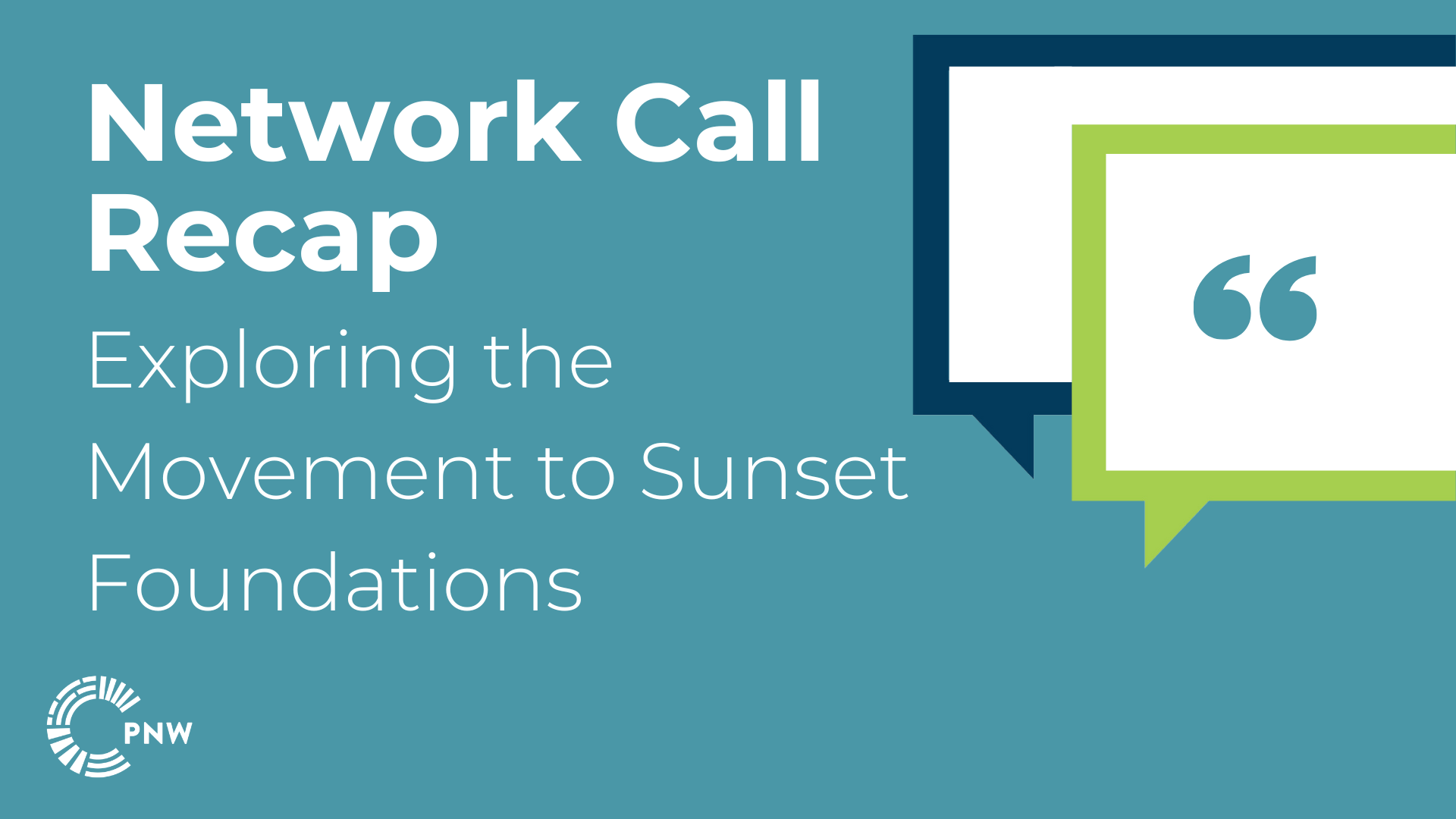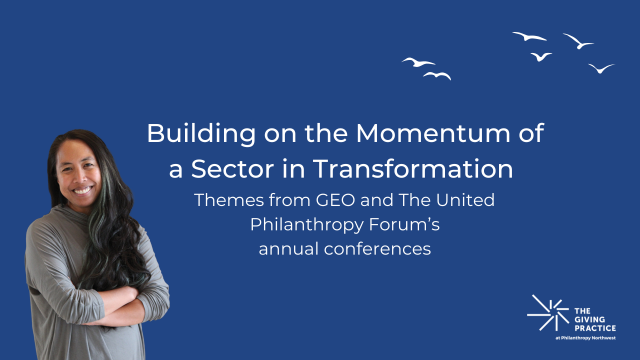
At our last Philanthropy Northwest Network Call in July, we delved into the growing movement of foundations choosing to spend out their resources and close their doors. This thoughtful process, known as sunsetting, requires careful planning and intentionality to respect and support the work of grantees, staff and trustees. We had the privilege of hearing insights from Blanch Vance of The Grove Foundation and Kathy Edwards and Melanie Matthews of the Cedarmere Foundation, both in the midst of their sunsetting journeys.
The Grove Foundation, a champion of trust-based grantmaking, has long-term relationships with grantees and a strong commitment to racial justice. Similarly, the Cedarmere Foundation, with an 18-year legacy, prioritizes capacity building for small nonprofits, embedding this crucial value in all of its work.
Why Sunset?
Kathy, co-founder and president, shared that the decision to sunset stemmed in part from a shift in focus from being family-centered to mission-centered. This change motivated trustees to invite community members to join the board and redefined how the foundation could best fulfill its mission. Over time, it became clear that spending out their resources would have a greater impact than existing in perpetuity.
Melanie, executive director and former community trustee, echoed this sentiment, noting the process was gradual and required flexibility. The Cedarmere Foundation’s journey involved numerous discussions and adjustments, ultimately deciding that sunsetting was the best way to meet their goals and support their community.
Blanch, senior manager of grants and strategic operations, explained that The Grove Foundation always intended to sunset within 25 years of the founders' passing. The foundation accelerated this timeline in 2018 to be more responsive to community needs, maintaining a focus on trust-based grantmaking and deepening relationships with partners.
Challenges and Considerations
During the conversation, the panelists discussed arguments they heard against sunsetting, such as the ability to be responsive over the long term and addressing future needs. However, they emphasized the significant impact that can be made by redistributing resources and power to those directly addressing today's challenges. Over their many years of grantmaking, they learned that the people who are closest to the problems and challenges that need to be addressed know the best approach for dealing with those problems.
Melanie explained “We talk a lot about the power dynamics inherent in philanthropy, and sunsetting is giving up that power. To create a more equitable society and community, we all have a role to play in the giving up of power such as handing over the assets and understanding that we are not the right people to decide, over decades, how to invest those assets.”
Supporting grantees during the sunsetting process is crucial. Melanie also highlighted Cedarmere’s approach of engaging community partners in decision-making and redistributing to other capacity-building organizations that would continue to support nonprofits after their closure. Blanch shared that The Grove Foundation is involving grantees in planning and letting them shape the final grant timelines.
Advice for Other Foundations
For those considering sunsetting, Kathy advised starting conversations early and having a clear plan. Blanch suggested talking to other foundations that have gone through the process for insights and guidance. Melanie emphasized the importance of developing values and a legacy vision to guide decision-making and maintain focus on the community.
Looking Ahead
Sunsetting allows foundations to make a bold, impactful statement by redistributing resources and power to address current inequities and some of the challenges we see in philanthropy. We appreciate the insights shared by Kathy, Melanie and Blanch, and we look forward to continuing this important conversation in the sector. This is just the beginning, and we hope more foundations will consider the potential benefits of sunsetting for greater social impact.
Here are resources to further your learnings on this topic.
The Grove Foundation resources:
- Grove Foundation Spend-Down Strategy
- Grove has committed to Due Diligence 2.0 Commitment
- Grove Finance & Investments
- Grove Investment Policy
Cedarmere Foundation resources:
- Cedarmere Foundation Legacy Vision
- Cedarmere Lessons from 18 years of grantmaking
- NCFP Strategic Lifespan Peer Network
Candid resources:


